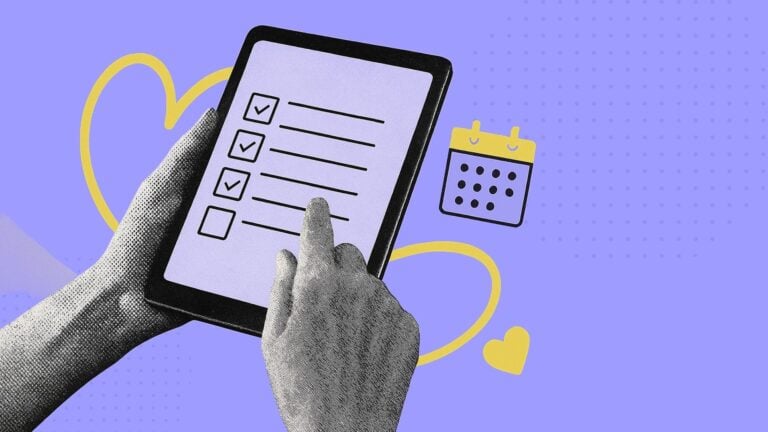The success of a senior living facility hinges on delivering exceptional care to seniors and people with disabilities.
Great care starts with running a smooth operation. When schedules, time tracking, and communication fall into place, your team can focus on what matters most—supporting residents with professionalism and empathy.
The right assisted living software gives you the tools to manage it all from one place. I tested the top platforms and narrowed the list to five that truly meet the needs of assisted living facilities, home care providers, and residential care teams.
Our Top Picks
-
1
Best all-in-one assisted living software
-
2

Good for automatic shift matching
-
3

Good for scheduling and time tracking
Why trust us?
Our team of unbiased software reviewers follows strict editorial guidelines, and our methodology is clear and open to everyone.
See our complete methodology
How I Chose the Best Assisted Living Software
To find the best assisted living management tools, I focused on features that improve care delivery by streamlining operations behind the scenes.
Core Capabilities I Looked For
- Staff scheduling: Tools to build, manage, and adjust schedules quickly—ideally with shift swaps, recurring shifts, and availability settings.
- HIPAA compliance: Platforms must protect resident data and meet privacy standards required in the healthcare sector.
- Communication tools: Built-in messaging or updates to keep staff aligned across shifts, teams, and locations.
- Medication tracking: Features to simplify dispensing, log missed doses, and flag interactions or irregularities.
- Resident care management: A central place to log vitals, care plans, and updates—accessible from mobile, with real-time syncing.
- GPS location tracking: Live location tracking to protect staff in the field and support faster, proximity-based dispatching.
Mobile-First and Field-Ready
I prioritized solutions that work seamlessly on mobile, since most caregivers are on the move and rarely behind a desk.
Other Essentials
- Reporting: Customizable reports to track trends, measure performance, and support compliance.
- Billing and finance tools: Easy-to-use invoicing, payment tracking, and financial reporting to simplify admin and support growth.
The tools I selected stand out for making life easier for both caregivers and administrators.
The 5 Best Assisted Living Softwares of 2025
-
Connecteam — Best all-in-one assisted living software
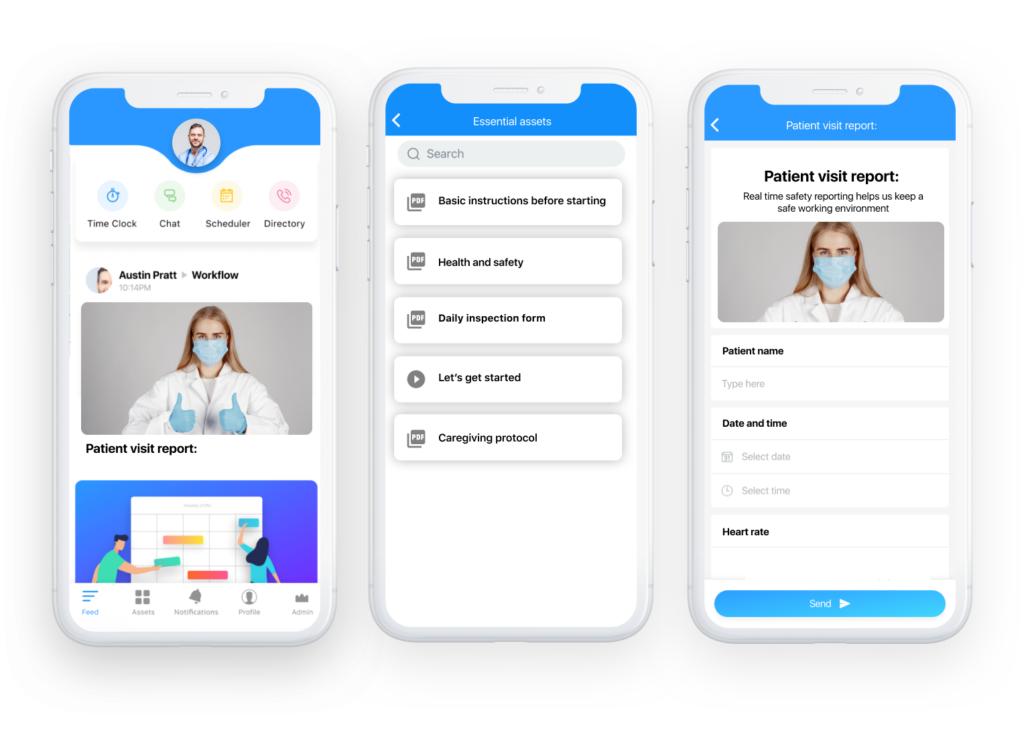
Key Features
- HIPAA-compliant communication and data storage
- Drag-and-drop shift scheduling with rule enforcement
- Real-time GPS tracking for caregiver safety
- Mobile checklists, forms, and daily care logs
- Time tracking with break and overtime compliance
- Mobile-first training with progress tracking
Pros
- Built for mobile, deskless teams
- Strong compliance tools (HIPAA, labor laws)
- Easy to set up and use
- Affordable pricing for growing teams
Cons
- No built-in medication management system
Connecteam is an easy-to-use workforce management solution that is suitable for assisted living facilities, caregivers, and home care agencies.
Why I chose Connecteam: Connecteam is HIPAA compliant, which is already a major win. This ensures that all personal health information stored or mentioned within the app is kept safe and secure, and only available to authorized individuals.
Moreover, Connecteam packs the features you need to keep daily operations running smoothly to enhance the resident experience. It enables you to schedule caregivers, track time, and monitor caregiver locations in real-time. It’s also easy to use and affordable: the paid plan costs $29 per month for 30 employees.
Let’s take a closer look at Connecteam:
Unwavering compliance with regulations in the healthcare sector
As I mentioned earlier, Connecteam is HIPAA-compliant, which is huge for assisted living operators in the United States. This means that resident information shared via the online team chat or stored within the app is protected as mandated by HIPAA regulations.
Connecteam also lets you customize access permissions to ensure each employee has access to data relevant to their roles. This prevents unauthorized access to sensitive documents, chat logs, and patient data.
Moreover, Connecteam ensures caregivers keep their requirements up-to-date. It notifies employees when state licenses or certifications are due for renewal. You can also set it to nudge caregivers to complete annual HIPAA refreshers to stay compliant.
I also love the ability to create and enforce scheduling rules. For example, you can stipulate the minimum rest period between shifts to comply with state laws, union agreements, and facility policies. Connecteam also helps you track employee breaks and overtime in full compliance with federal and state requirements.
Efficient caregiver scheduling
Connecteam auto-scheduler enables you to generate schedules in minutes based on caregivers’ qualifications, availability, and shift preferences. It takes the guesswork out of the scheduling equation, speeding up the process. Matching caregivers to only the shifts they’re qualified for ensures that residents get consistent, top-notch care.
You can set minimum and maximum hours and shifts a caregiver can work to promote fair distribution of workload and prevent burnout. This helps keep caregivers always energized and ready to deliver high-quality care. Moreover, Connecteam lets you stipulate a minimum rest period between shifts to ensure caregivers get enough time to unwind.
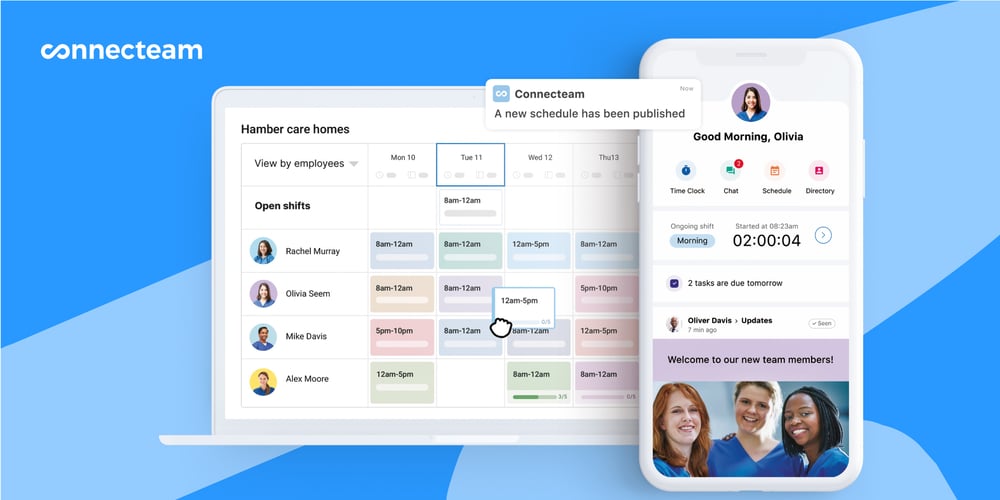
I love Connecteam’s recurring shift tool, which lets you schedule repetitive tasks once and have them repeat automatically. This is particularly helpful when assigning daily medication rounds, hygiene assistance, and meal support duties. It saves you the manual hassle and promotes care continuity since residents are served by the same staff over time.
Real-time GPS location tracking
It’s not uncommon for home caregivers to experience difficult situations while on duty. Whether it’s traversing a dangerous neighborhood or a midnight call for urgent care, you’ve got to be prepared to respond when the unexpected happens.
This is where Connecteam’s real-time location tracking comes in handy. The feature gives you a 360 degree view of your field nurses location, adding a vital layer of security. If a caregiver is venturing into unfamiliar homes, you can keep an eye out and quickly respond in case of unexpected situations.
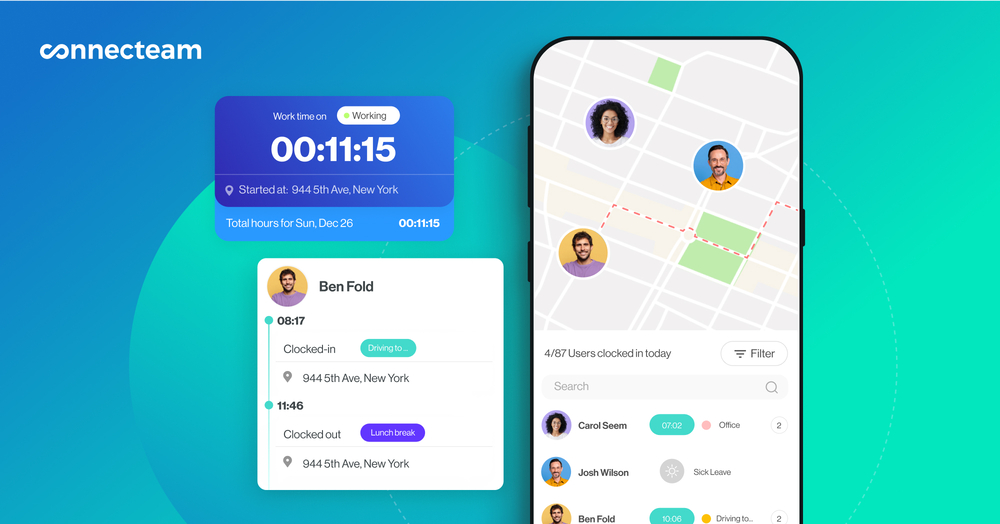
You can also set up geofence notifications to receive alerts when a caregiver leaves the patient’s premises. This is mainly helpful when caregivers traverse dangerous neighborhoods. It nudges you to follow the caregiver’s movement, every step of their way, until they’re out of the tricky situation.
Moreover, real-time location monitoring of caregivers can improve your response time to emergencies. For example, if a high-strung family calls with an urgent request for care, you can dispatch the nearest caregiver. This ensures the patient in distress gets help faster, which could mean the difference between life and death.
And so much more
- Accurate time tracking: Connecteam tracks caregivers’ regular work hours, breaks, and overtime in compliance with labor laws.
- Forms and checklists: Connecteam offers customizable digital forms and checklists that help streamline employees’ workflows, reduce errors, and ensure that care and administrative tasks are completed efficiently.
- Team communication: Connecteam’s intuitive online chat allows staff members to communicate with each other in real time and ensure they are on the same page. You can also communicate news and other important information via public channels.
- Mobile-first training: Connecteam allows you to provide mobile-friendly training programs to ensure caregivers are competent in their roles. Employees learn at their own pace, right from their smartphones.
Our care assistants are the lifeblood of our business and I wanted to ensure they receive the exact support they need, be that training, access to documents or a place to chat with peers, as well as feeling valued, engaged and part of one big national team. Connecteam checked every box we needed and more.
Pricing
Free-for-life plan availablePremium plans start at $29/month for 30 users
14-day free trial, no credit card required
Start your free trial -

ShiftCare — Good for automatic shift matching
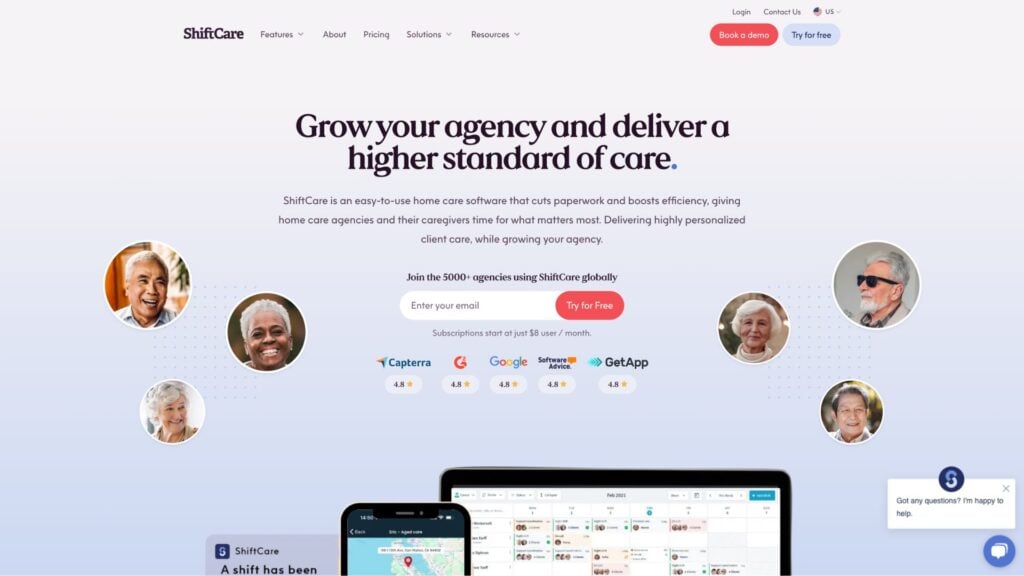
ShiftCare is a HIPAA-compliant care management software designed with home care, assisted living, and regional center providers in mind.
Why I chose ShiftCare: ShiftCare provides a comprehensive suite of features, including care management, scheduling, invoicing, and human resource management features. The real reason it made it onto my list is because of its artificial intelligence (AI) powered capabilities, which optimize workflows for smarter care.
Let’s explore ShiftCare’s main features:
Automatic shift matching
ShiftCare’s smart scheduler leverages an AI-powered algorithm to match caregivers to shifts on the job board. The matching algorithm considers staff skills, availability, and the client’s needs to find the most suitable caregiver for each open job.
It then automatically invites the caregiver to the shifts without the manager lifting a finger. Doing so reduces manual work, freeing you up to other important admin tasks. ShiftCare has other helpful features, such as recurring shifts and the ability to detect potential compliance issues like overtime violations.
For all its helpful AI shift-matching capabilities, ShiftCare isn’t without its quirks. For example, it doesn’t support shift swaps, which can be off-putting if you want employees to trade shifts when life happens. It also doesn’t let you set a minimum rest period between shifts or a maximum shifts.
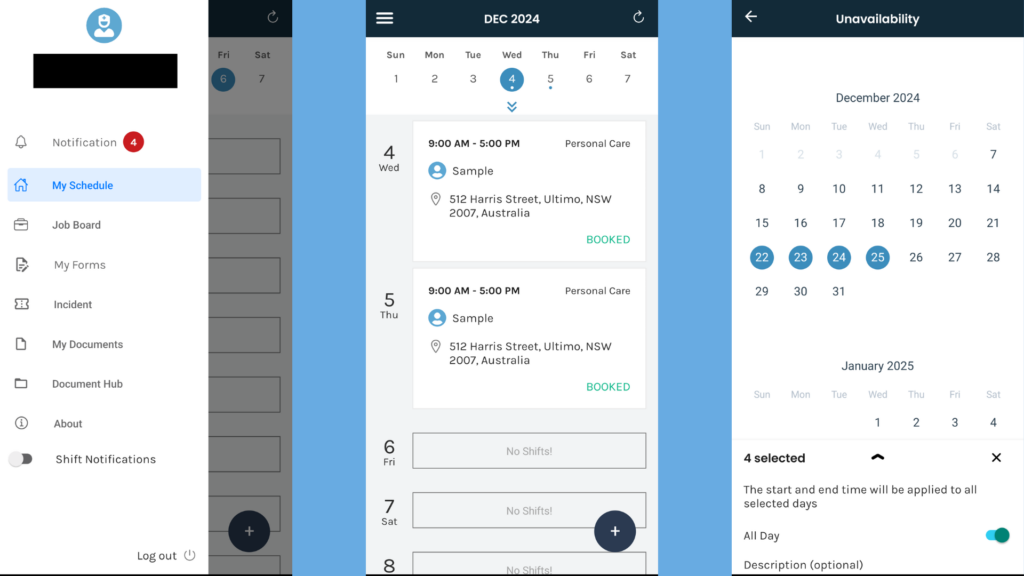
The ShiftCare mobile app lets caregivers manage their shifts and unavailability and track time. Incident and progress tracking
Another feature that sets ShiftCare apart is its speak-to-text capability, which simplifies patient progress recording. Caregivers only need to talk into their smartphones to update progress notes after shifts. This is particularly helpful when speaking is faster than typing in the information.
Moreover, the incident reporting feature enables care providers to submit incident tickets for unexpected issues encountered during shifts. The customizable headings make it easy for teams to correctly document each incident.
Caregivers can submit incidents on their mobile phones, which is helpful when out in the field. The only minor grievance is that you can’t customize other elements beyond the headings.
What users say about ShiftCare:
The customer service has been exceptional, the software is great value for money, and the experience using ShiftCare has been overwhelmingly positive.
Don’t bother with it, its expensive for what it is.
Key Features
- Staff scheduling
- Care management
- Team messaging
- Incident management
Pros
- Care-centric features
- Easy-to-use app
Cons
- Comparatively pricey
- Limited integrations
Pricing
Starts at $8.00/user + $40 base fee/month Trial: Yes — 7 days Free Plan: No
-

Deputy — Good for scheduling and time tracking
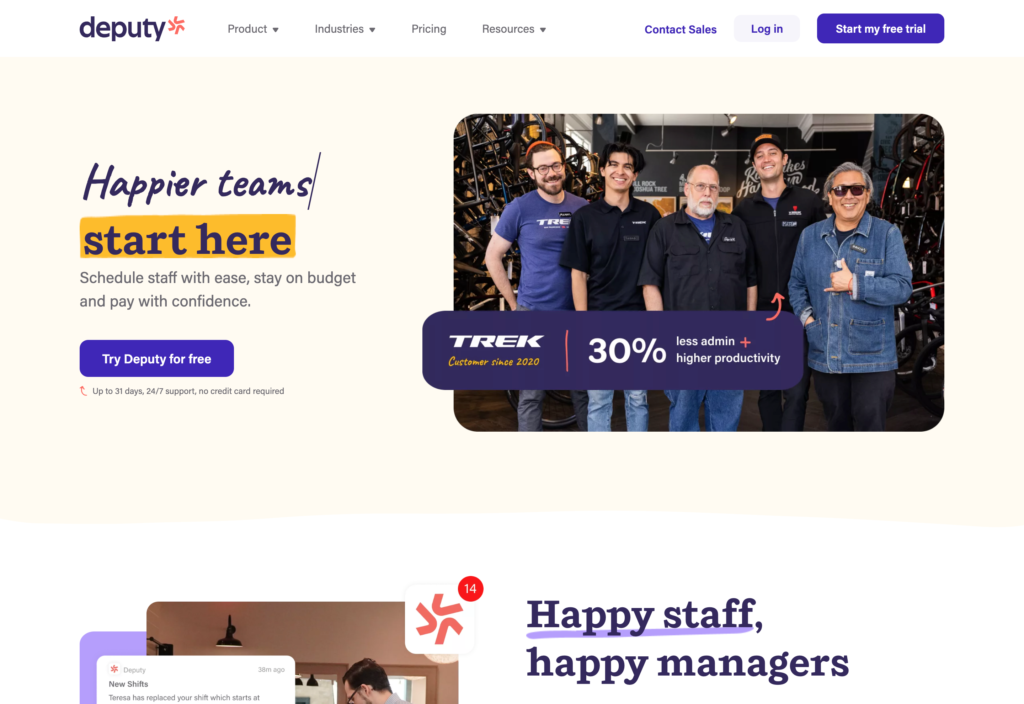
What’s new with Deputy
Deputy recently raised its base price from $4.50 per user/month to $5 per user/month. Existing clients are now being moved to the new pricing, significantly raising costs for many.
Deputy is an all-in-one workforce management software for businesses across many verticals, including the healthcare sector.
Why I chose Deputy: Deputy is a powerful solution for assisted living facilities that need to schedule staff and track time in full compliance with labor laws. The software snatched a spot on my list because of its demand forecasting and AI-powered auto-scheduler features. However, the software isn’t HIPAA-compliant, which is a deal-breaker for senior housing facilities in the U.S.
Let’s look at some of Deputy’s core features:
AI auto-scheduler
Deputy offers an impressive suite of scheduling tools that enable you to build and manage staff shifts with ease. You can create schedules from scratch using templates, dragging and dropping existing shifts, or copying previous weeks. You can also add shift instructions to help caregivers understand specific resident needs.
My favorite feature is the AI-powered auto-scheduler, which can create schedules based on service demand. I found it useful for senior care facilities that utilize per-diem nurses and home healthcare givers based on fluctuating patient demands. In this case, you can leverage predictive analytics to create efficient schedules so you’re never short-handed or overstaffed.

Deputy’s scheduler gives a clear overview of your staff and their scheduled work times. Deputy also creates schedules based on staff certification, availability, and preferences. Doing so ensures caregivers are matched with patients and residents based on their skills. This reduces the chances of errors, improving the quality of care.
Time tracking
Deputy allows employees to track time via web and mobile apps, making it ideal for resident and home caregivers. You can also set up a shared kiosk to let employees clock in and out from a shared device.
I also found that the app uses various safeguards to enhance timecard accuracy. For example, you can erect geofences around your nursing home to ensure employees only clock in and out when physically within the jobsite. This improves attendance tracking and ensures your company pays employees for the time spent with the patients.
What users say about Deputy:
Easily categorize employees according to title.
Read user review on TrustRadius
Support – [I think] it’s pretty terrible. Response time is relatively quick through chat, but I’m generally unable to get help at this level.
Read user review on TrustRadius
Key Features
- Staff scheduling
- Leave management
- Time tracking
- Task management
Pros
- AI-powered auto-scheduler
- Easy-to-use mobile app
Cons
- Mobile app doesn’t work when offline
- Advanced security only available on higher plans
Pricing
Starts at $4.50/user/month Trial: Yes — 31-day Free Plan: No
-
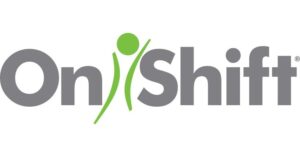
OnShift — Best for talent acquisition and workforce optimization in senior care
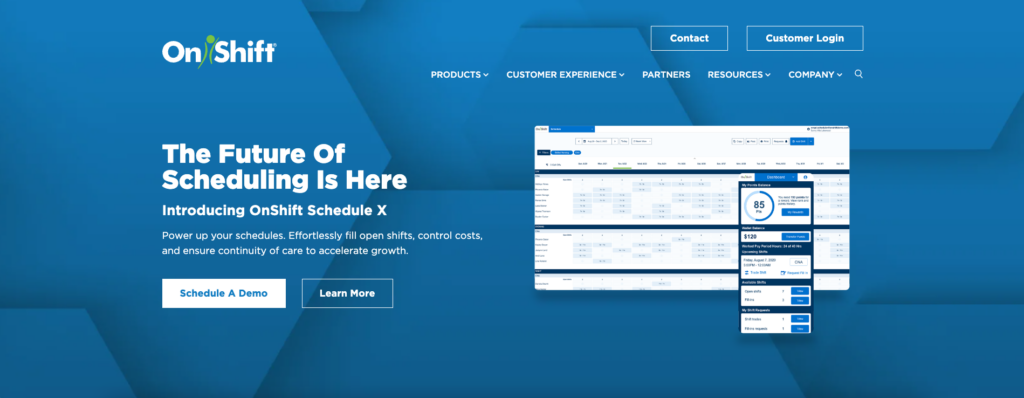
OnShift is a cloud-based scheduling and workforce management software solution built specifically for senior care facilities.
Why I chose OnShift: OnShift is built to automate senior living communities management. As a result, its features are tailored to the specific needs of assisted living facilities. Among its notable tools are shift planning, talent acquisition, employee engagement & retention, payroll, and HRIS. But despite its impressive suite, OnShift’s learning curve is steep.
Let’s explore OnShift key functionalities:
Talent acquisition
OnShift’s talent acquisition module helps you find the best talent without blowing through your hiring budget. It automates job posting on social media and popular job boards to help you cast a wider reach. You can also leverage automated communication tools to keep candidates engaged throughout the hiring process.
The app also helps create a branded career portal to enhance the candidate’s experience. The portal allows applicants to submit pre-hire paperwork and track application status anytime, anywhere. What impressed me is that OnShift integrates with popular background screening services to comply with underlying hiring regulations.
Scheduling with OnShift
Like the rest of my picks, OnShift optimizes shift planning for assisted living facilities. What sets it apart is Schedule X, a feature that provides actionable insights to help senior living operators maximize shift coverage.
I didn’t test this new scheduling technology because it’s not available on the free trial. But from what I have read, it’s an intuitive, drag-and-drop scheduling tool that adapts to recurring schedule patterns. It also ensures compliance with scheduling regulations while preventing overstaffing and overtime to keep labor costs under control.
Schedule X also integrates Schedule Automation Marketplace Integration (SAMI). This enables assisted living facilities to use the ShiftKey marketplace to fill select open shifts with qualified professionals. While integration helps scale to meet demands, it can lead to inconsistencies in care continuity and caregiver familiarity.
What users say about OnShift:
Onshift is a plus in all categories from storage to scheduling, messaging, and managing employees attendance.
The mobile app was lacking, and not very useful to schedulers.
Key Features
- Talent acquisition tools with branded career portal
- AI-assisted shift planning with compliance safeguards
- Employee engagement and retention tools
- HRIS and payroll system integration
Pros
- Built specifically for assisted living and senior care
- Strong recruiting and workforce planning capabilities
Cons
- Steep learning curve
- No free plan or public pricing
Pricing
Contact vendor for pricing Trial: No Free Plan: No
-
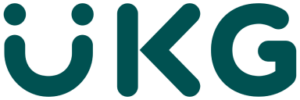
UKG Ready — Good for HR and payroll management in mid-sized senior care facilities
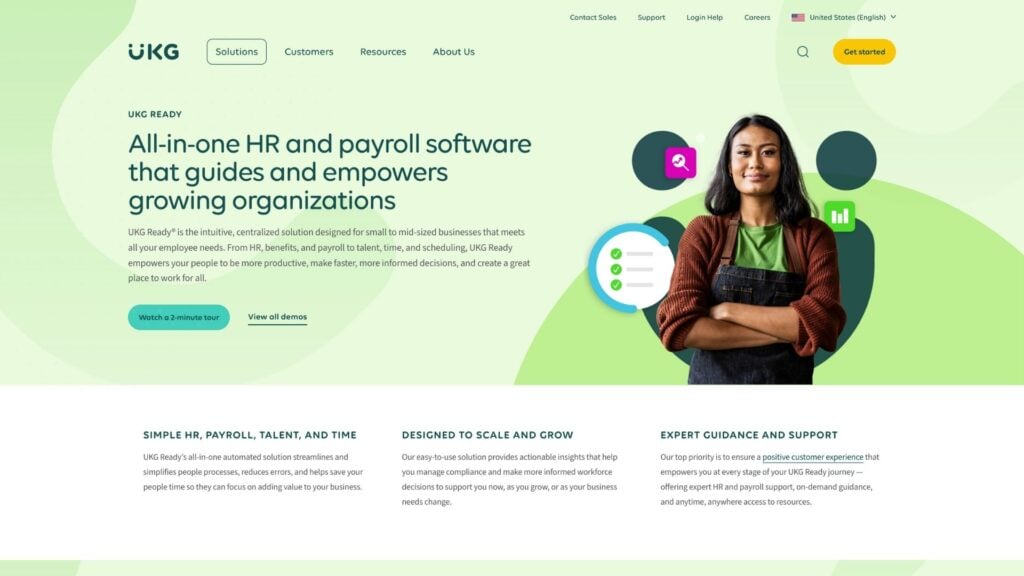
UKG Ready is an all-in-one HRIS solution geared towards businesses in various verticals, including the healthcare sector.
Why I chose UKG Ready: UKG Ready helps small, and mid-sized assisted living facilities automate common HR and payroll workflows. Unlike other solutions on my list, the software isn’t purposely built for the healthcare industry. However, I found its HR, payroll, time tracking, and talent management features helpful for assisted living facilities looking to simplify the people processes.
Let’s explore some of the UKG Ready’s features:
HR and benefits management
UKG Ready might not be as feature-rich as Deputy, but I found it quite effective at streamlining HR tasks. What stood out to me was the ability to create workflows using the drag-and-drop function to simplify the people processes. Moreover, the self-service tools and mobile apps make it easy to update information, review requests, and complete forms.
The software also packs the punch when it comes to employee benefits management. It enables managers to administer benefit enrollment, carrier communication, and enrollment data from a centralized dashboard. Additionally, caregivers can easily select plans on their smartphone. The centralization and mobile-friendliness improve transparency and streamline administration.
Other notable benefits include the centralized location for company resources, which simplifies onboarding. I also found that UKG Ready helps assisted living facilities in the US stay compliant with Consolidated Omnibus Budget Reconciliation Act (COBRA) law.
Workforce management
UKG Ready also has a comprehensive workforce management module. It has robust scheduling tools that enable you to create schedules based on staffs’ skills, operational demand, employee availability, and preferences.
The scheduler automatically flags any shift or scheduling actions that violate underlying rules to maintain compliance. I also liked the shift pattern tool, which simplifies scheduling for common care tasks. You can also let employees claim open shifts based on their qualifications and swap shifts when unexpected situations happen.
Moreover, UKG Ready allows employees to record work hours using web and mobile time clocks. I liked its offline capability, which enables caregivers working in remote areas to track time without a hitch. The software also lets you track breaks and overtime for compliance, though these trackers could be more flexible.
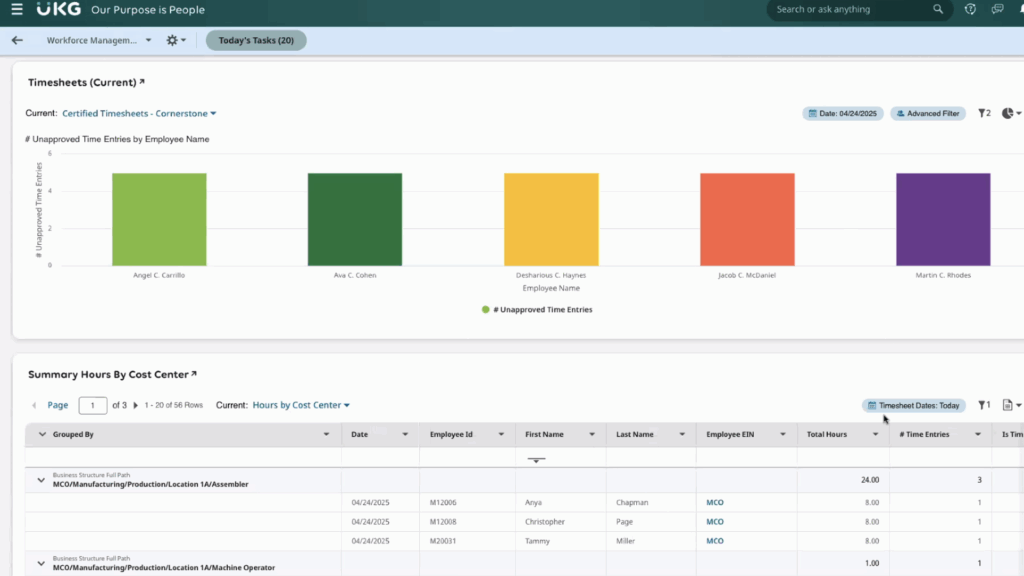
UKG’s timesheet feature displays a graph showing unapproved time entries by team member and then a report showing line-by-line time entries by cost center. What users say about UKG Ready:
It’s good for time-keeping and also provides the ability to view scheduled shifts and even pick up new ones.
The ATS is fine, but not necessarily user-friendly
Key Features
- Workforce scheduling with compliance safeguards
- HR and benefits administration workflows
- Mobile and offline time tracking
- COBRA and labor law compliance tools
Pros
- Comprehensive HR, time, and payroll suite
- Mobile app works without internet connection
Cons
Cluttered, outdated interface
Higher price point with no transparent plans
Pricing
Contact vendor for price Trial: No Free Plan: No
Compare the Best Assisted Living Softwares
| Topic |
 Start for free
Start for free
|

|

|

|

|
|---|---|---|---|---|---|
| Reviews |
4.8
|
4.8
|
4.6
|
4.2
|
4.2
|
| Pricing |
Starts at just $29/month for the first 30 users
|
Starts at $8.00/user + $40 base fee/month
|
Starts at $4.50/user/month
|
Contact vendor for pricing
|
Contact vendor for price
|
| Free Trial |
yes
14-day
|
yes
7 days
|
yes
31-day
|
no
|
no
|
| Free Plan |
yes
Free Up to 10 users
|
no
|
no
|
no
|
no
|
| Use cases |
Best all-in-one assisted living software
|
Good for automatic shift matching
|
Good for scheduling and time tracking
|
Best for talent acquisition and workforce optimization in senior care
|
Good for HR and payroll management in mid-sized senior care facilities
|
| Available on |
What Is Assisted Living Software?
Assisted living software is used by facilities that provide care for seniors and individuals with disabilities. It helps caregivers manage and monitor various aspects of their residents’ care, such as medication schedules, vital signs, and daily activities.
This software streamlines operations, enhances communication, and ensures compliance with regulatory requirements. It may include modules for resident profiles, staff scheduling, billing, reporting, and family engagement.
With the right senior living software, facilities can improve their quality of care, increase efficiency, and reduce errors and risks. It can also enable families to stay informed and involved in their loved one’s care.
The Benefits of Assisted Living Software
Assisted living software has numerous advantages for both residents and caregivers, including better relationships with residents and their families, plus improved performance and profitability.
Efficient care management
Assisted living software helps caregivers manage their residents’ care more efficiently. It provides a central platform to manage medication schedules, monitor vital signs, and track residents’ daily activities. Facility staff can access shared information easily, reducing the likelihood of errors and enhancing communication between caregivers.
Improved compliance
Assisted living facilities are subject to strict regulatory requirements. Failure to comply with these requirements can lead to penalties and legal issues. Senior living management solutions help facilities comply with regulations by providing features such as electronic health medical administration records, documentation management, and audit trails.
Enhanced family engagement
Family members are often concerned about their loved ones in assisted living facilities. Assisted living management solutions provide families with real-time updates on family members’ care, including medication schedules, vital signs, and daily activities.
Streamlined operations
Assisted living facility management software streamlines operations by providing resident profiles, staff scheduling, billing, reporting, and task tracking modules. This automation and knowledge organization enables caregivers to focus on providing quality care to residents rather than administrative responsibilities.
Cost savings
Assisted living software can automate routine tasks like medication reminders, meal planning, and appointment scheduling, reducing the need for staff and improving efficiency.
The software can also track resident health data, allowing for early intervention and prevention of costly medical issues. As a result, assisted living software can lead to significant cost savings in the long run.
How Much Does Assisted Living Software Cost?
Assisted living software typically involves a subscription-based pricing model. Fees are based on the number of users and the features included. Prices can range from $2 to $200 per user per month, depending on the software’s functionality, customization options, and customer support.
Some senior living software providers may charge additional fees for implementation, training, or customization services. Others may offer discounts for annual subscriptions or multi-year contracts.
Connecteam’s assisted living software is affordable for any kind of facility. Notably, it offers a free small business plan for up to 10 users, which is a significant differentiating factor. Paid plans start at just $29 per month.
It’s important to note that while the price is an important factor, it should not be the sole deciding factor in selecting an assisted living software provider. Be sure to consider the software’s features, ease of use, customer support, and compatibility with existing systems.
FAQs
The key features to look for when selecting assisted living software include resident management, medication management, staff scheduling, family communication, and financial management. Other important factors include the platform’s ease of use, customer support, and data security.
Assisted living software can improve the quality of care provided to residents by automating routine tasks, such as medication reminders and scheduling appointments. It can also enhance communication between staff members, residents, and families, ensuring everyone is on the same page regarding care needs and preferences.
Some potential drawbacks of using assisted living software include the cost of implementation and maintenance, the need for staff training and support, and the potential for technical glitches or downtime.
The Bottom Line On Assisted Living Software
Assisted living software can significantly improve resident satisfaction and streamline administrative tasks for staff members. It can assist with resident care management, medication, staff scheduling, family communication, and financial management in a centralized location.
A good assisted living software solution can automate routine tasks, improve communication, and provide real-time data for better decision-making.
Connecteam is an excellent choice for assisted living software. It offers a user-friendly interface, robust features, and reliable customer support. Plus, its mobile-first approach makes it easy for staff members to access critical information and complete tasks on the go.


